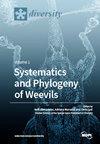Picocyanobacteria in Estuaries of Three Siberian Rivers and Adjacent Shelves of Russian Arctic Seas: Genetic Diversity and Distribution
IF 2.1
3区 生物学
Q2 BIODIVERSITY CONSERVATION
引用次数: 0
Abstract
Single-cell cyanobacteria, being an integral part of picoplankton in marine ecosystems, have been suggested to be important contributors to primary production and carbon cycles in the global ocean. The spatial distribution, abundance and diversity of natural communities of picocyanobacteria (PC) in estuaries of Khatanga, Indigirka and Kolyma rivers and adjacent shelves of the Laptev and East Siberian seas were studied in September 2017. The PC concentrations were higher in the estuaries than in the shelf stations of the seas. The abundance of PC was 1.25 × 106 cells/L, 0.42 × 106 cells/L and 1.58 × 106 cells/L in the surface layer of Khatanga, Indigirka and Kolyma estuaries, respectively. The contribution of PC to total autumn picophytoplankton abundance averaged 6% and 3% in the Khatanga and Indigirka estuaries and reached 5% in the Kolyma estuary. Phylogenetic analysis of the 16S rRNA gene and ITS region clone libraries revealed picocyanobacterial sequences related to marine Synechococcus subclusters 5.1-I, 5.2 and 5.3. Of the phylotypes from Synechococcus S5.1-I and S5.2 that were found, only several were discovered earlier, while the remaining clones were unique. Two groups of phylotypes (clades A and E) were found that were not closely similar to those previously described in both marine and freshwater habitats. It can be expected that a more detailed study of the phytoplankton of the Arctic seas will further expand our understanding of the diversity of these key components of the food chains of oceanic biocenoses.西伯利亚三河河口和俄罗斯北极海相邻陆架的Picocyanobacteria:遗传多样性和分布
单细胞蓝藻是海洋生态系统中浮游生物的重要组成部分,是全球海洋初级生产和碳循环的重要贡献者。2017年9月,对哈坦加河河口、英迪吉卡河河口和科雷马河河口以及拉普捷夫海和东西伯利亚海邻近陆架的picocyanobacteria (PC)自然群落的空间分布、丰度和多样性进行了研究。河口的PC浓度高于海洋陆架站。Khatanga河口、Indigirka河口和Kolyma河口表层PC丰度分别为1.25 × 106 cells/L、0.42 × 106 cells/L和1.58 × 106 cells/L。在Khatanga和Indigirka河口,PC对秋季浮游植物总丰度的贡献平均为6%和3%,在Kolyma河口达到5%。通过16S rRNA基因和ITS区克隆文库的系统发育分析,发现了与海洋聚囊球菌亚群5.1-I、5.2和5.3相关的picocyanobacterian序列。在已发现的聚珠球菌S5.1-I和S5.2的种型中,只有几个是较早发现的,其余的克隆都是独特的。发现了两个类群(进化支A和进化支E)与以前在海洋和淡水生境中描述的类群不太相似。可以预期,对北极海域浮游植物的更详细研究将进一步扩大我们对海洋生物群落食物链这些关键组成部分多样性的理解。
本文章由计算机程序翻译,如有差异,请以英文原文为准。
求助全文
约1分钟内获得全文
求助全文
来源期刊

Diversity-Basel
Environmental Science-Ecological Modeling
CiteScore
3.40
自引率
12.50%
发文量
925
审稿时长
11 weeks
期刊介绍:
Diversity (ISSN 1424-2818) is an international and interdisciplinary journal of science concerning diversity concept and application, diversity assessment and diversity preservation. It is focused on organismic and molecular diversity. It publishes reviews, regular research papers and short notes in the regular issues. Related news and announcements are also published. Our aim is to encourage scientists to publish their experimental and theoretical results in as much detail as possible. Therefore, there is no restriction on the length of the papers. Full experimental details must be provided so that the results can be reproduced.
 求助内容:
求助内容: 应助结果提醒方式:
应助结果提醒方式:


